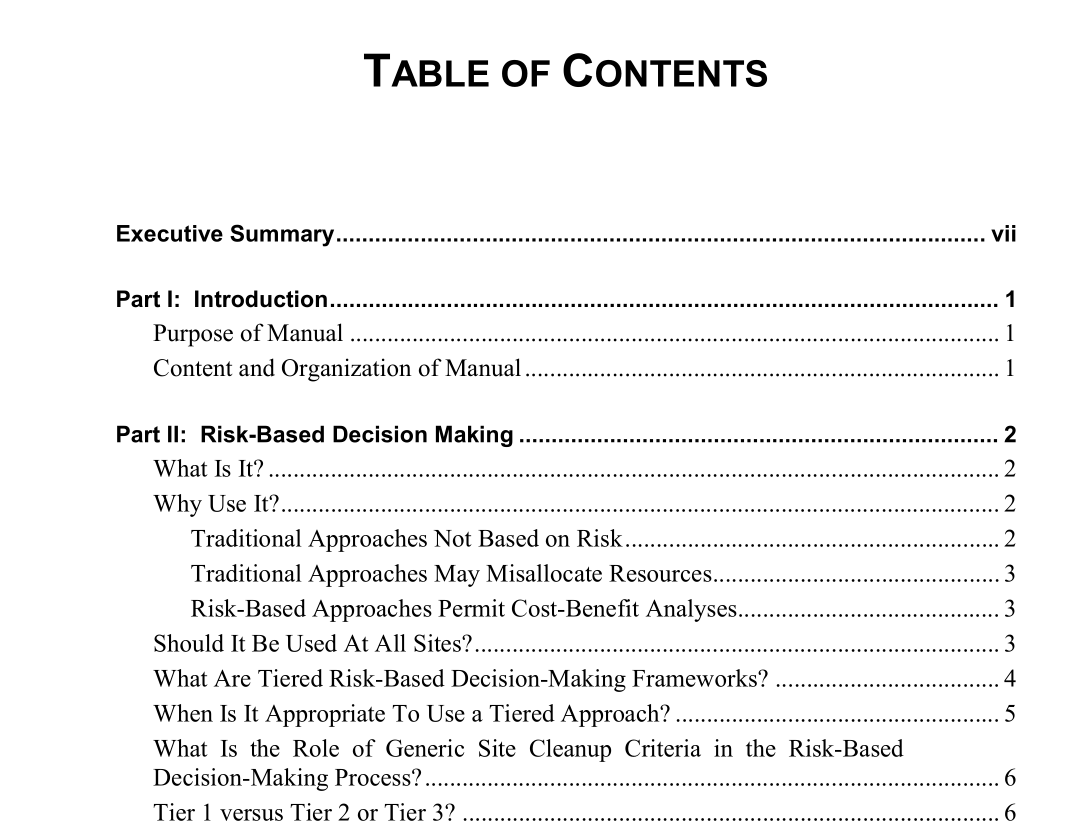API PUBL 4709 pdf download

API PUBL 4709 pdf download.Risk-Based Methodologies for Evaluating Petroleum Hydrocarbon Impacts at Oil and Natural Gas E&P Sites
The concentrations of both metals and PAHs in crude oil are not sufficiently high to require TPH RBSLs below those that were deter- mined based upon non-cancer health effects. For example, the lowest (i.e., most restrictive) non-residential TPH RBSL for crude oil, based upon the concentrations of the seven carcinogenic PAHs that were identified in over 70 crude oils, was 170,000 mg/kg. This calculation was based upon the target risk level for cancer of 1 in 100,000 that is recommended by ASTM and used by many states. This target level is also the midpoint of the acceptable risk range set by the U.S. EPA for evaluating contaminated sites under Superfund. These results suggest that the routine analysis of carcinogenic PAHs and metals in soil at E&P sites is not necessary to ensure protection of human health.
The understanding of the impact of benzene on the management of E&P sites is continuing to evolve. Using the risk evaluation methods presented in this document, it has been determined that TPH RBSLs for complex hydrocarbon mixtures (e.g., crude oils or gas condensates) will be based on direct contact with soil as the limiting exposure path- way as long as the benzene concentration in the parent mixture is less than 300 mg/kg. Approximately one-third of the 69 crude oils that were tested as part of the PERF study (97-08) contained less than 300 mg/kg of benzene; all 14 of the gas condensates contained benzene at concentrations above 300 mg/kg. At benzene concentrations above this threshold, a simple, conservative Tier 1 analysis indicates that benzene controls the risk at the site, where the limiting exposure pathway is not direct contact with soil but leaching of the benzene from soil to ground- water. As such, the Tier 1 TPH RBSLs that are derived for ground- water protection purposes at an E&P site can be below 10,000 mg/kg when these concentrations of benzene are present. Alternatively, meeting separate benzene RBSLs may be appropriate in some cases.
It is important to note that the concentrations of benzene in hydro- carbon-impacted soil at E&P sites can be significantly less that its con- centration in fresh crude oil. This is due largely to the natural processes of weathering, like volatilization. Also, following release from the soil in either the vadose or saturated zones, benzene can biodegrade, thereby reducing the potential exposure to any human receptors. Both of these processes have the net effect of increasing the acceptable TPH RBSL for crude oil in soil. The specific impact of these processes on the RBSL, however, requires an analysis of the site- specific conditions at a site.
In some circumstances, it may be necessary to confirm the con- centration of benzene in the hydrocarbon mixture at an E&P site since this is the one constituent that has the potential to decrease the accep- table TPH RBSLs at an E&P site. However, the effect of benzene on TPH RBSLs at any given E&P site will depend heavily upon the site- specific conditions. For example, at a site where a crude oil that is rich in benzene (i.e., >300 mg benzene per kilogram of oil) was recently spilled and the groundwater table is near the ground surface, it may be prudent to analyze soil samples for the presence of benzene. On the other hand, if the only evidence of hydrocarbon contamination at an E&P site is weathered crude oil from historical spills, the analysis of benzene in the soil is probably not necessary. Similarly, analyses of benzene are probably not required if the fresh crude oil contains low concentrations of benzene or if the potential for biodegradation of the benzene in the subsurface environment is significant.









